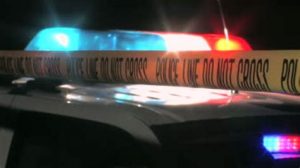03 Nov OBSCURE TRAFFIC OFFENCES AND HOW TO DEFEND THEM: DRIVING MORE THAN 25KPH PAST EMERGENCY VEHICLES
In 2014 South Australia reduced the speed for driving past emergency vehicles to 25kph, down from 40kph. South Australia is the only state which makes it an offence to drive more than 25kph through an emergency service speed zone. Other states have a 40kph limit.
There are good reasons for this law. Emergency workers must get out of their vehicles and be very close to the road to attend to emergencies. Their lives are at risk if cars are travelling past at speeds that could kill a person standing near the road.
Here is what Section 83 of the Road Traffic Act says:
 A person must not, while driving through an emergency service speed zone, drive at a speed greater than
A person must not, while driving through an emergency service speed zone, drive at a speed greater than
(a) 25 kilometres per hour; or
(b) if a lesser speed is required in the circumstances to avoid endangering any person—that lesser speed.
The Road Traffic Act specifies that the penalty is a fine “not exceeding $2500”. The offence can be expiated, which means that police can give an expiation notice. The fine and demerit points depend on how much over 25kph you are travelling as follows:
Speed over limit Fine (as at 14/7/17) Demerit points
1 – 9kph $230 2
10 – 19kph $431 3
20 – 29kph $754 5
30kph or more $960 7
An emergency services zone is defined as an area in the “immediate vicinity” of a vehicle driven by an emergency worker that is stopped and is flashing red and blue lights, or the area between two sets of flashing red and blue lights. An emergency worker has a broad definition and includes Police, Fire and Ambulance officers, and also includes certain people engaged in firefighting and emergency duties (like CFS, the military, Border Force).
Defending a charge of driving past emergency vehicles at more than 25kph
As with all expiation notices, the only way to challenge the offence is to elect to be prosecuted and have your case heard in court. It is pointless writing to the Expiation Branch. Save your argument for the courts.
Importantly, if you are alleged to have travelled more than 45kph over the limit and given an immediate licence suspension, elect to be prosecuted immediately. Once you have elected to be prosecuted then the suspension is lifted until the charged is finalised before the courts.
Police are wrong to give instant licence disqualifications for this offence. That is only available for a charge of driving at an excessive speed, which is more than 45kph over the speed limit. An emergency speed zone is not a “speed limit”. The penalty in the Act does not allow for a licence disqualification. Elect to be prosecuted immediately if you are given an immediate licence suspension.
I have defended people who were given an expiation notice and an immediate licence disqualification for this offence. Not one of them has ever ended up the six month licence disqualification. The law doesn’t allow it. The reason people are getting the disqualification by paying the expiation notice is because a code on the expiation notice triggers a licence disqualification with the Registrar of Motor Vehicles. The RMV doesn’t know whether it was a validly expiated offence. Do not pay the fine and elect to be prosecuted immediately. (Have I said this often enough?)
There are few ways to defend this offence:
-
- The area must be defined by red and blue flashing lights. If there are no red and blue flashing lights then it is not an emergency services speed zone. A vehicle with orange flashing lights, even if it is being driven by someone who meets the definition of an emergency worker, is not an emergency services speed zone.
- “Immediate vicinity” is ambiguous. I think this would depend on where the zone is. I think a court would find that an emergency services speed zone on a 110kph road would have a greater range than in a 50kph road. It would depend on the type of emergency too. But this is an avenue that you could use to defend the charge.
- You could challenge how the speed was detected. An estimate of speed would be much harder to prove than detection by a speed camera.
If the expiation notice is for one of the speeding ranges in the above table and demerit points are an issue, you should elect to be prosecuted. The only way to have demerit points reduced is to a Magistrate for a reduction of points. A Magistrate can reduce points if there is “proper cause”. Clients often tell me that they are on a busy road and by the time they see the flashing lights (around a corner, poor visibility etc), it would be dangerous for them to slam on their brakes to slow down. This is especially so on a freeway where you would need to slow down from 100kph to 25kph very quickly.
I know I sound like a broken record, but if you want to dispute an expiation notice, you must elect to be prosecuted. I make very few guarantees, but I can guarantee that if you pay the fine, you will incur the demerit points and will suffer the consequences of those demerit points.
Did I mention that you should elect to be prosecuted if you dispute the offence?
